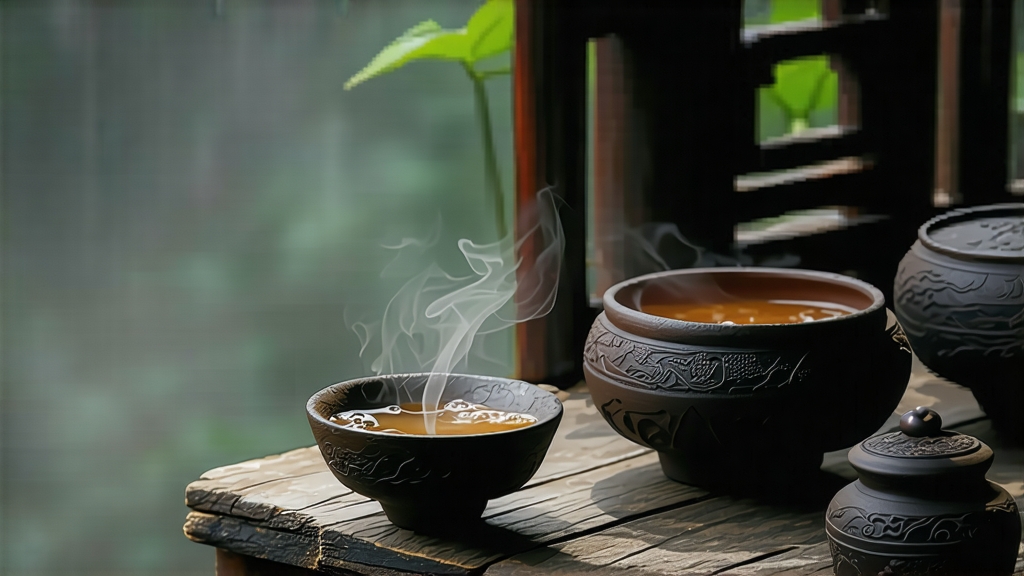
High in the mist-cradled Wuyi Mountains of northern Fujian, narrow bamboo rafts still glide along the Nine-Bend Stream, ferrying visitors past sheer cliffs whose crevices harbor one of China’s most revered oolongs—Shui Xian, literally “Water Sprite.” To the uninitiated the name may sound whimsical, yet for three centuries this cultivar has embodied the stern minerality of its terroir, translating the iron-rich rocks and cool mountain springs into a liquor that Chinese connoisseurs describe as possessing “rock rhyme,” or yan yun. Unlike the floral lift of Tie Guan Yin or the honeyed heft of Phoenix Dancong, Shui Xian offers a darker, more meditative profile: the scent of cedar embers, the taste of roasted stone-fruit, and a lingering sweetness that arrives only after a slow, deliberate exhale.
Historical records first mention Shui Xian in the early Qing dynasty, around 1706, when a traveling scholar named Zhu Yigui noticed unusually large tea bushes growing near the village of Huiyuan, deep inside the Wuyi core scenic zone. Local monks claimed the plants had “lived since the Song,” an assertion impossible to verify yet telling in its myth-making. Zhu took cuttings back to his hometown of Jianyang, where the cultivar prospered and acquired its poetic name—either because the leaves shimmered like water nymphs in the morning dew or because the tea’s aroma reminded drinkers of narcissus flowers blooming along the riverbank. By the late nineteenth century Shui Xian had eclipsed earlier Wuyi varieties such as Que She and Bai Ji Guan in both acreage and reputation, its hardiness making it the preferred choice for the arduous charcoal-baking process that defines Wuyi rock oolong.
Today Shui Xian exists in two overlapping taxonomies. The first is horticultural: the original “Shui Xian” cultivar (Camellia sinensis var. sinensis cv. Shui Xian) is a large-leaf, medium-late budding bush that can reach five meters if left unpruned. The second is geographic: any tea picked within the 60-square-kilometer UNESCO Wuyi buffer zone may be sold as “Zheng Yan” (true cliff) Shui Xian, while leaf from outer townships—Jianyang, Wuyishan city suburbs, or even neighboring Jiangxi—carries the lesser label “Zhou Cha” (peripheral tea). Between these poles lies a gradient of elevation, soil chemistry, and microclimate that artisans express through the intensity and duration of charcoal firing. A core-cliff Shui Xian might receive only two gentle bakes to preserve its innate mineral snap, whereas a valley tea could endure three marathon firings, each lasting twelve hours, to coax structure into an otherwise softer leaf.
The crafting cycle begins in late April, when morning temperatures still dip below 15 °C and the mountain mist delays oxidation. Pickers select the standard “zhong kai mian” criterion: three leaves and a bud fully unfurled yet still tender enough to snap cleanly. The harvested shoots are cradled in shallow bamboo sieves and transported to the cliff-foot factories, where they are withered first outdoors beneath the mountain breeze, then indoors on water-heated troughs set to 30 °C. When the leaf edges bruise to a translucent crimson—sign that cellular walls have ruptured—artisans begin the all-night yaoqing ritual, tumbling the tea in rattan drums every hour to coax gradual oxidation. By dawn the leaf aroma has shifted from cut grass to bruised apricot, at which point the tea is pan-fired at 220 °C for ninety seconds, locking in a partial oxidation around 30 %.
What follows is the signature Wuyi charcoal bake, a craft so exacting that only a handful of master roasters remain. The tea is loaded into 40-kilogram rattan baskets nested above pits of glowing lychee-wood charcoal whose temperature hovers between 80 and 120 °C. Every twenty minutes the baskets are rotated; every two hours the charcoal is gently tamped to control airflow. A single lapse—too hot, too long—will carbonize the leaf and flatten its aromatic complexity. Over successive nights the tea is allowed to rest in earthenware jars, breathing and contracting, before returning to the charcoal embers. The most traditional